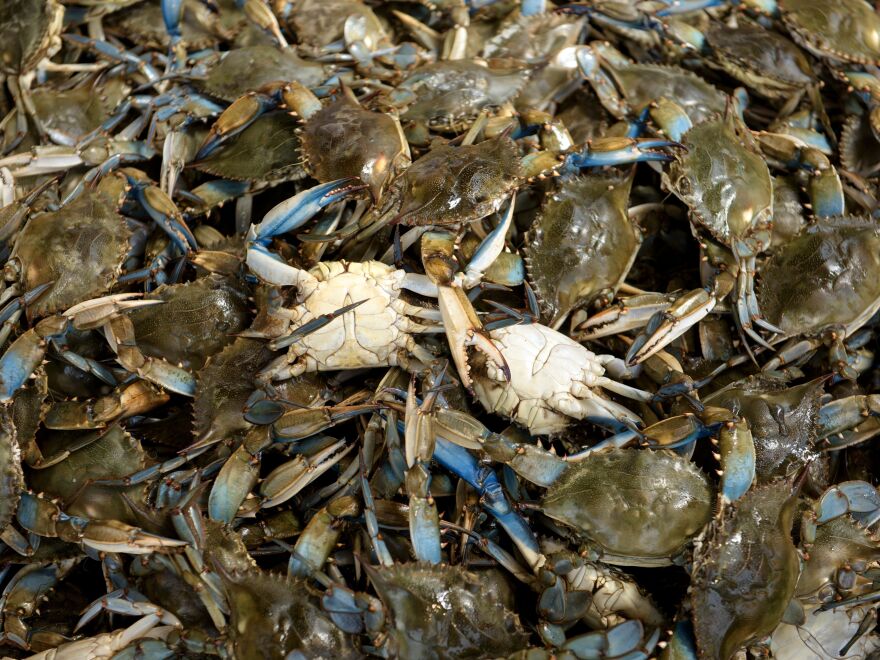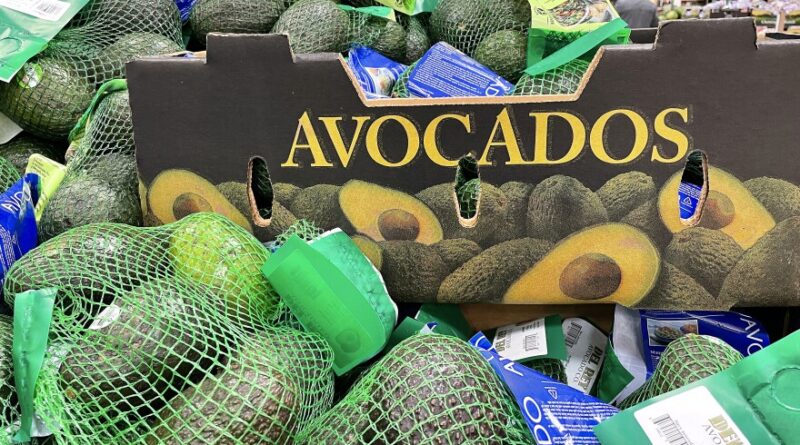Sustainable eating habits that can help the environment without controlling your health
Climate change affects our food, and our food affects the weather. NPR presents a week to stories and discussions about finding solutions.
What we eat plays a role in the health of our environment. Here are some things to consider when trying to make possible changes to improve your bottom line without breaking the bank.
‘Local’: More than just how far your food has traveled

Justin Sullivan/Getty Images
/
Getty Images
When we talk about eating locally as a climate solution, we’re talking about the energy and resources it takes to get tomatoes from a farm in Florida to your kitchen. But as Barbara Moran of WBUR Boston explains:
“[I]In the middle of a New England winter, no one grows tomatoes locally unless they are hydroponic or in a greenhouse. While these practices may make sense in the environment, studies show that tomatoes grown in the Florida field have less environmental impact than greenhouse tomatoes in Ontario or hydroponic tomatoes from Maine.”
➡️ QUESTIONS: How do you know the impact of local food on climate change?
The landscape looks different depending on where you live
Back in 2022, WBUR Boston’s Andrea Shea went to the tough spot for a week to see how good it could be. Outside of the obvious switches (finding local bananas, oranges, and avocados in New England is extremely difficult), finding most food within 200 miles of home was impossible, but it was difficult.
Looking for homemade maple syrup? Check it out. Eggs? Check it out. Coffee? Not so much.
➡️ What to eat in New England for a week’s worth
➡️ The growing ‘farm to school’ movement provides fresh local produce to children
When you’re striving for perfection when you’re just trying to get out of your area, you can get overwhelmed or blow your budget.
How to make eating local a reality in your area
This depends on taking advantage of what is available on time, available and cheap.
Not all of us have access to many supermarkets or grocery stores, let alone finding locally produced grains or spices within our budget. But more options are emerging, and if you take advantage of them, they can help improve that access for others.
This pop-up restaurant in Charlotte, North Carolina, serves a food desert in the community and raises funds to add a local grocery store, teaching kitchen and butchery. As WFAE Charlotte’s Zachary Turner reports, the effort is designed to help local farmers, increasing access to locally produced food.
“If we want to save farmland, our farmers need to make money,” Carolina Farm Trust CEO Zack Wyatt says. “If we care about climate change, we need to farm the right way.”
Meat: Nothing? Little? What can be done?

Shouldn’t it be there? Not exactly.
As a goal, our nutrition scientists recommend that adults eat less than half an ounce of red meat per day. That works out to about 3.5 ounces — or one serving of red meat — per week. And that’s far less red meat than Americans now eat on average: between 2 and 3 ounces per day.
Climate scientists are also asking us to use less to reduce the greenhouse gases and resources involved in commercial meat production.
➡️ This dietary change can reduce your carbon footprint and increase longevity
➡️ Millions of women are ‘under the muscles.’ These foods help boost energy
That’s not zero, but it’s certainly too low for most Americans. And what you replace can have an impact not only on the weather but also on your health.
Back in 2022, WBUR Boston’s Barbara Moran looked at the plant-based and traditional breakdown of a few key substitutes for chicken, eggs, milk and cheese.
But no one is having more fun.
Access to convenient and affordable vegetarian or vegan food is improving in many parts of the country. In Idaho, “despite their reputation for meat and red potatoes,” Julie Luchetta of Boise State Public Radio found many opportunities that offer ways to reduce meat consumption.
➡️ Non-white Americans eat less meat. Vegan advocates of color explain why
➡️ Don’t call it vegan: What hospitals are learning from tricking people into eating green
Just last month in the Bay Area, KQED’s Luke Tsai found a “variety smorgasbord of jollof, lumpia, curry rice bowls, Cajun fried chicken and simple Dole Whip-style” – vegan all – at one of the biggest food festivals in the area.
Amazing fixed switches

BRENDAN SMIALOWSKI/AFP via Getty Images
/
AFP via Getty Images
Now there are some solutions that won’t work for everyone but they can encourage you as you try to find sustainable eating habits.
Are you worried about invasive species? Try eating them.
KCUR is putting together a list of edible invasive species to try if you’re in the Kansas City area.
Please Note: If done incorrectly, foraging can cause serious injuries. Those who choose to pursue foraging should do thorough research from multiple reliable sources, consult with experts, and exercise caution.
Some seafood that causes problems in other parts of the country can make it easier to switch from hard to source options. For example, in the Pacific Northwest, green crabs are common, but they can also be an alternative to the blue crabs found in many East Coast foods.
➡️ What makes seafood sustainable?
➡️ Is it okay to eat farmed fish? Here’s what you need to know
➡️ ‘Have I Had My Last Good Oyster?’
After the recent outbreak, finding everything related to cicadas was a major goal. One option? Frying them and adding them to food for a little relief.
When growing at home is possible
In some cases, growing your own produce or herbs can be the best option to help you reduce the cost of eating sustainably.
Not sure where to start? The Life Kit has a step-by-step guide to starting an edible garden (no matter how small a space you have.)
Copyright 2024 NPR
#Sustainable #eating #habits #environment #controlling #health
